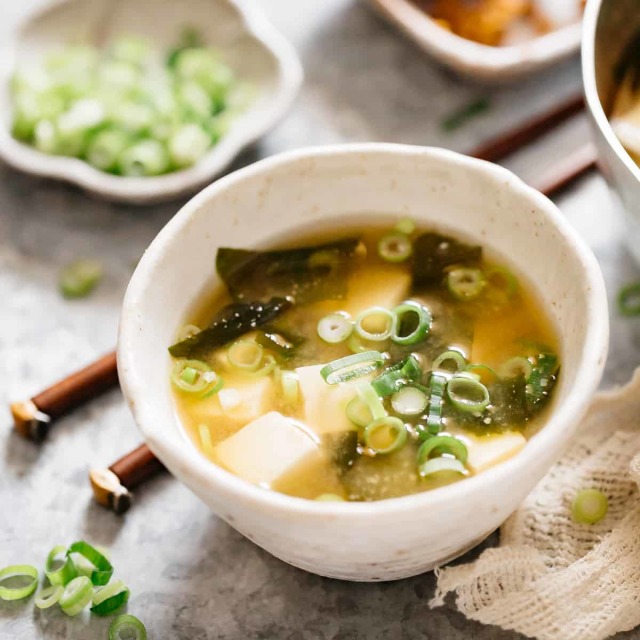Miso soup can be prepared in several ways, depending on the chef and the style of soup. Japanese recipes usually call for most vegetables to be cooked in the simmering dashi, a stock made from fish and kelp. The particular vegetables used are mushrooms, daikon, carrots, potatoes, tofu, and fish. The miso is suspended separately in some dashi stock removed from the simmering mix, to keep the miso paste from cooking, which alters the flavor, kills beneficial bacteria, and reduces the health benefits of biologically active miso paste. When the vegetables are cooked, the stock is removed from heat, the miso suspension is added and mixed into the soup, any uncooked ingredients are added, and the dish is served.
In Japan, miso soup and white rice make up the central dishes of the traditional Japanese breakfast. The soup has been a favorite of commoners and royalty alike for many centuries, but there are also many other dishes involving breakfast. They are all quite small, some include egg, fish, and natto, which is a fermented soy bean. The soup is usually served in lacquer bowls with lids and drunk directly from the bowl, though the solid ingredients are eaten with chopsticks. The bowl sometimes has a lid to keep heat and aroma in as well as to improve the presentation.

